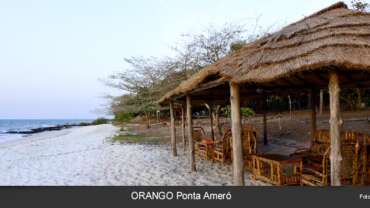Rios & Lagoons of Guinea Bissau
Welcome to the land of sweet water that flows through rivers and estuaries,Past an unspoiled landscape into the salty sea,Sweet water lagoons where birds live and love,From eagle to guinea fowl, hornbills to owl,All can be found in Guinea-Bissau.
A COUNTRY THAT LIVES BY THE WATER
Guinea Bissau has got plenty of sweet and salt water.
Sweet water just a few meters below the ground, allowing life for the entire population.
Sweet water of the lagoons, where thousands of birds live and reproduce, sweet water rivers that flow into the sea through huge estuaries.
Salt water of the Atlantic ocean, in front of the beaches and among the islands; salt water of the “Rios”, estuaries going up to 150 kilometres inside the continent (as Rio Cacheu) or just for a few hundred meters, straight rivers like Rio Geba, in front of Bissau, or ramified like Rio Grande de Buba.
Salt water Rios: sea inlets inside the continent
They are a peculiarity of Guinea Bissau, where you meet the largest number of salt water rivers in all of western Africa and Africa itself.
The main characteristic of Rios are the Mangroves, which grow along their banks almost uninterruptedly. It’s quite amazing plunging by boat inside the narrowest arms of the sea, under the branches which descend into the water to become roots and grow again. And look at the oyster beds on the roots.
Sweet water rivers: the Rio Corubal and the Rio Gêba
There are fewer sweet water rivers than salt ones. The two main ones are both affluent of the Rio Gêba estuary : the Rio Gêba’s branch that flows through Bafatà, and Rio Corubal. The last one provides a beautiful view near the falls of Saltinho.
Lagoons
Guinea Bissau is a very flat country, so that any small depression barred toward the sea becomes a lagoon, called “bolanha” in local language.
They are like natural rice-fields, and people, with small banking works, use them to grow rice,.
Along the inside roads you can see many of them, of any size, and there is plenty of flowers and birds. There you can watch men fishing, and, in harvest time, women gathering rice.
The largest ones provide a natural habitat for many species of birds.
Cufada lagoon
The most famous among lagoons is Cufada, between Rio Corubal and Rio Fulaconda.
Cufada Lagoon Natural Park protects this fascinating place, the country’s largest water reserve.
The forests all around these lakes are a wonderful sight and an important natural habitat. Some parts are passages of migrations. The ecosystem varies in the dry or the wet season for the presence of different animals. There are leopards, hyenas, white hippopotamus, black crocodiles, antilopes, buffalos, spotted gazelles, roars and different kinds of monkeys. Birds, both local and migratory, are specially abundant, among them some internationally protected species.
Where to eat, where to sleep
Along the Rios there are a few towns, starting points for excursions.
Cacheu and São Domingos (rio Cacheu), Bafatà (rio Gêba), Quinhamel, Mansoa, Buba and Cacine (on the homonymous rivers) offer possibility of food and lodging.
Good possibility in Saltinho too. There are lodging facilities also in Cantanhez Park.
And anyway, since there are so many rios all over the country, with the exclusion of the driest regions, almost every village is near one of them.
Most interesting visits
Among the salt water rios, the most interesting places are: Rio Cacheu (from São Domingos), Quinhamel (from Quinhamel), Rio grande de Buba (from Buba) e Rio Cacine (from Cantanhez Park or from Cacine).
Among the sweet water rios, Rio Gêba in Bafatà and surroundings is lovely, but anyway the main attractive remains Saltinho, on Rio Corubal.
Among the lagoons: Cufada, starting from Buba.








